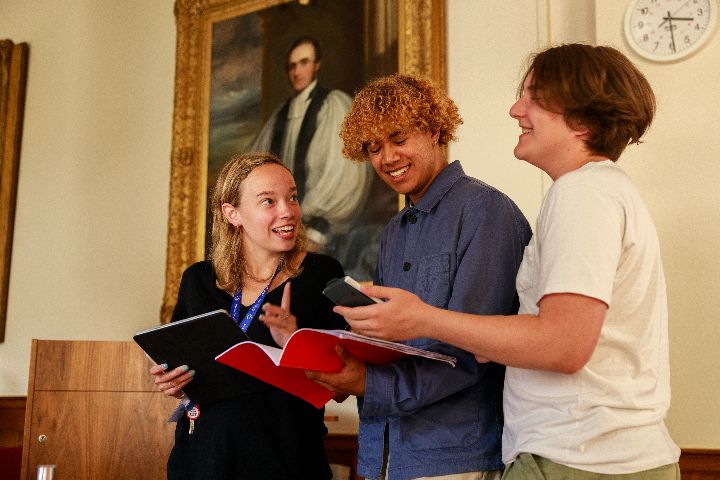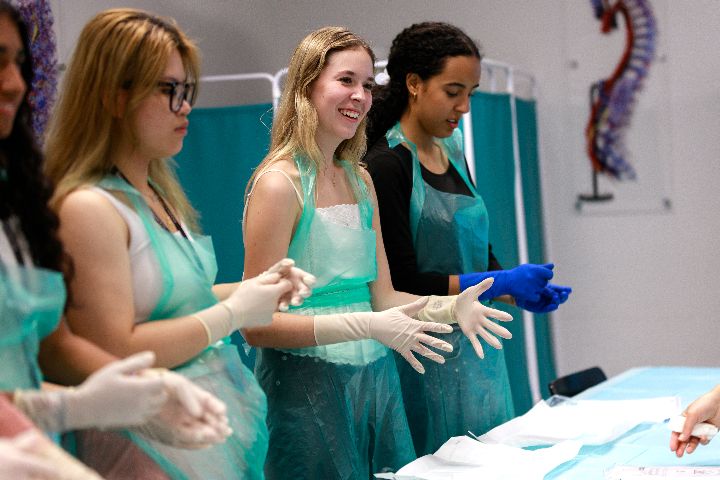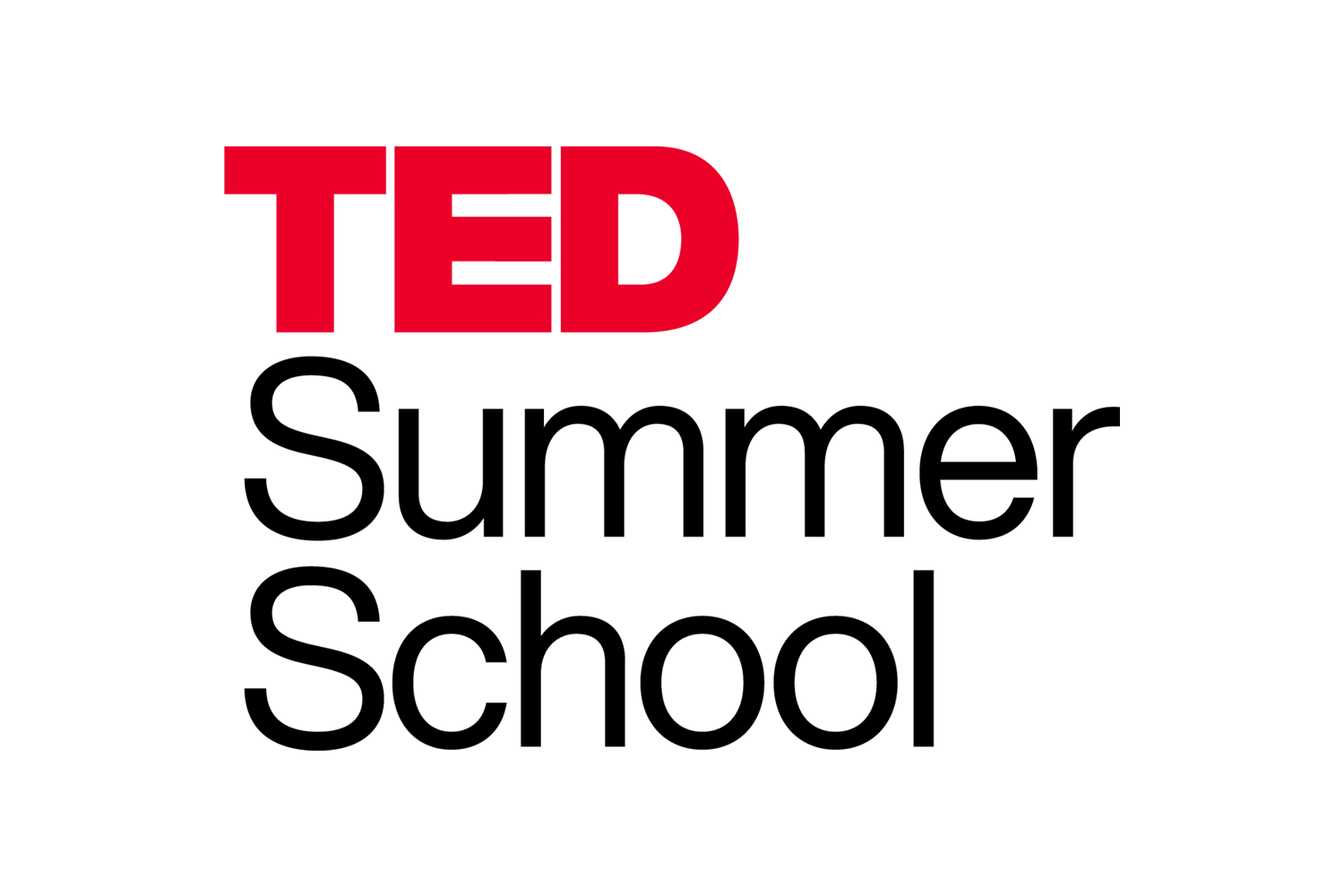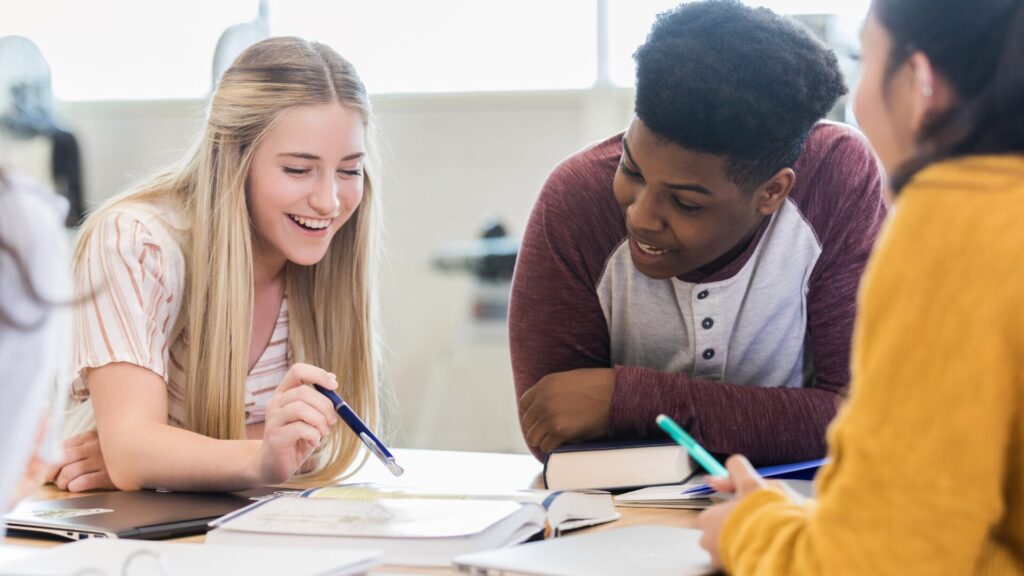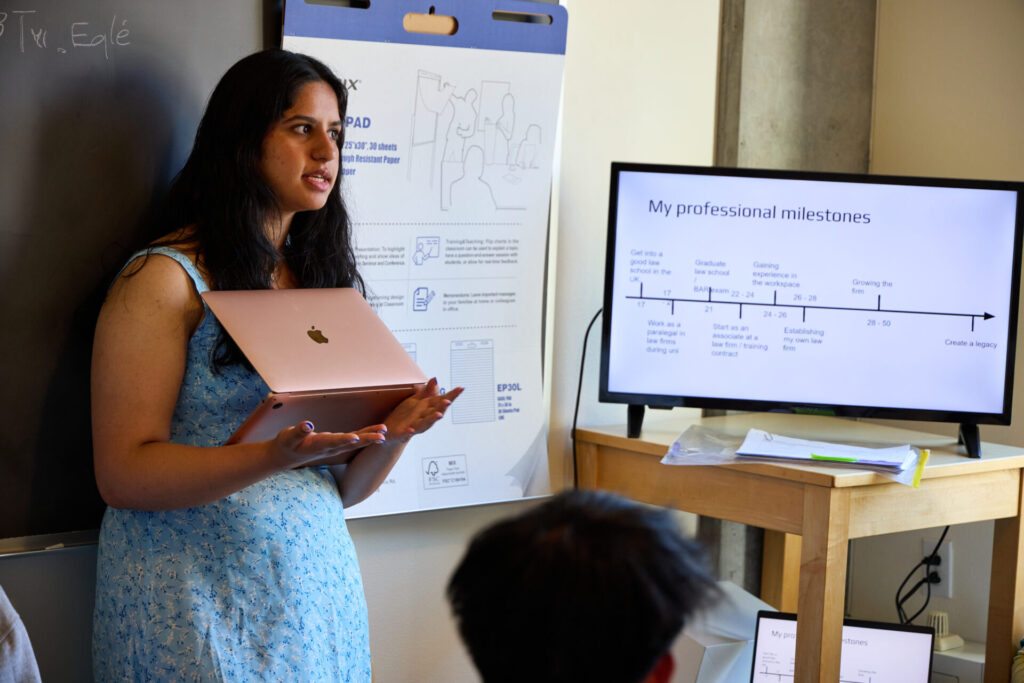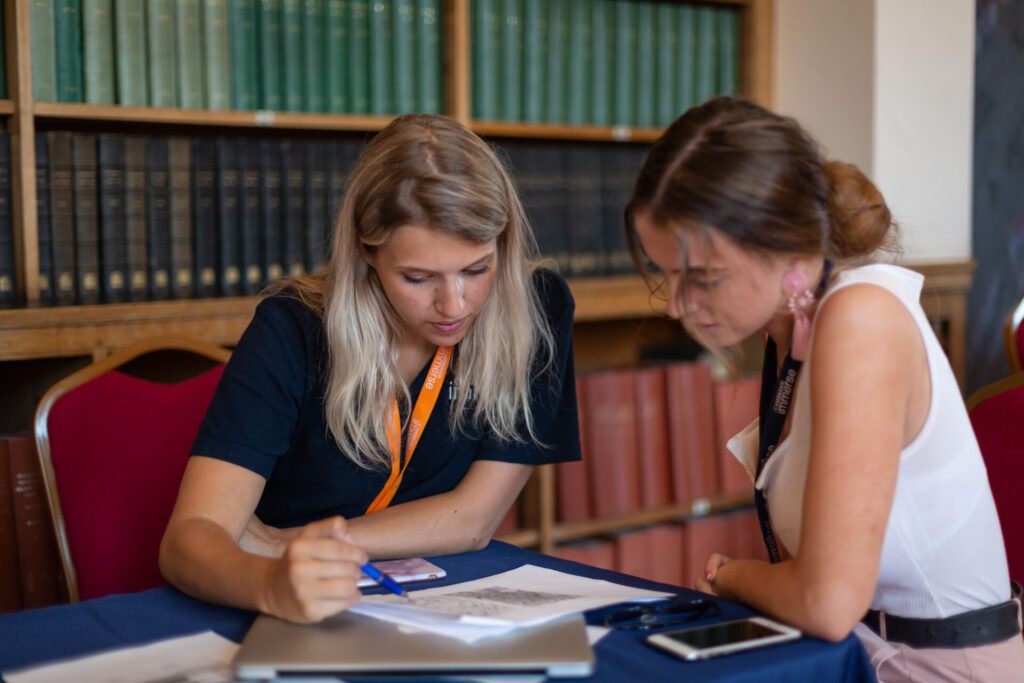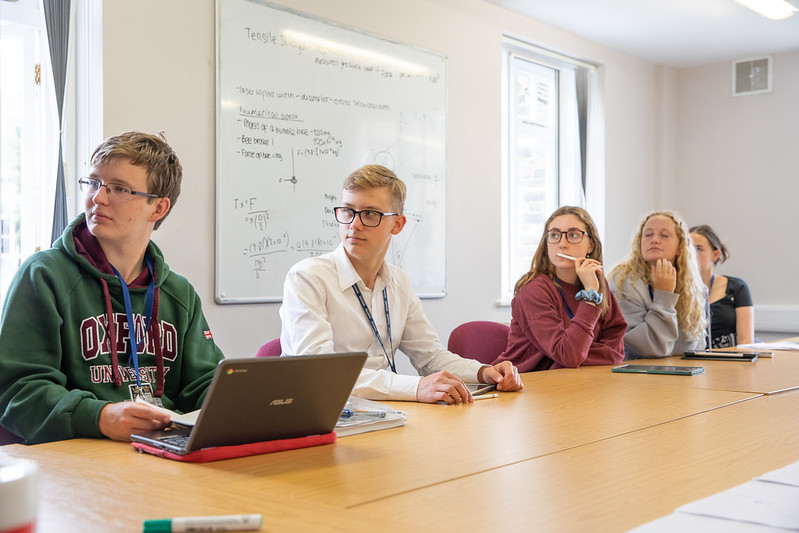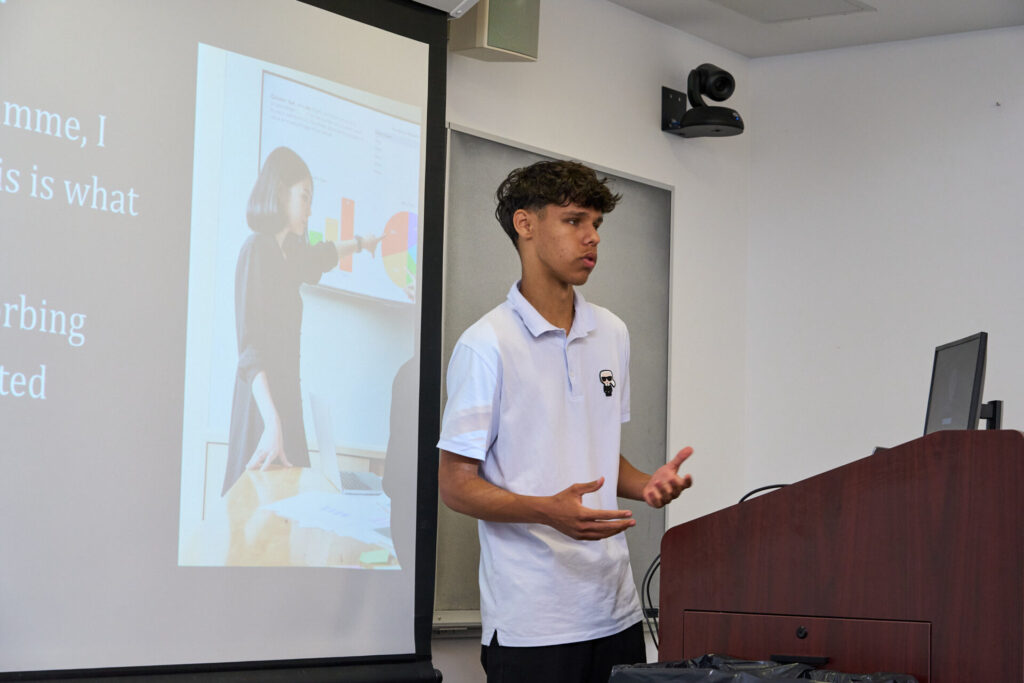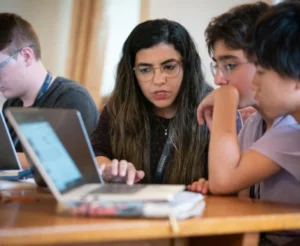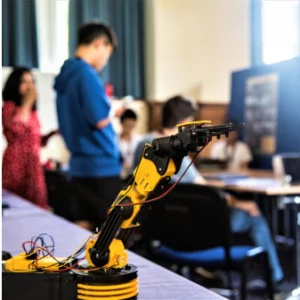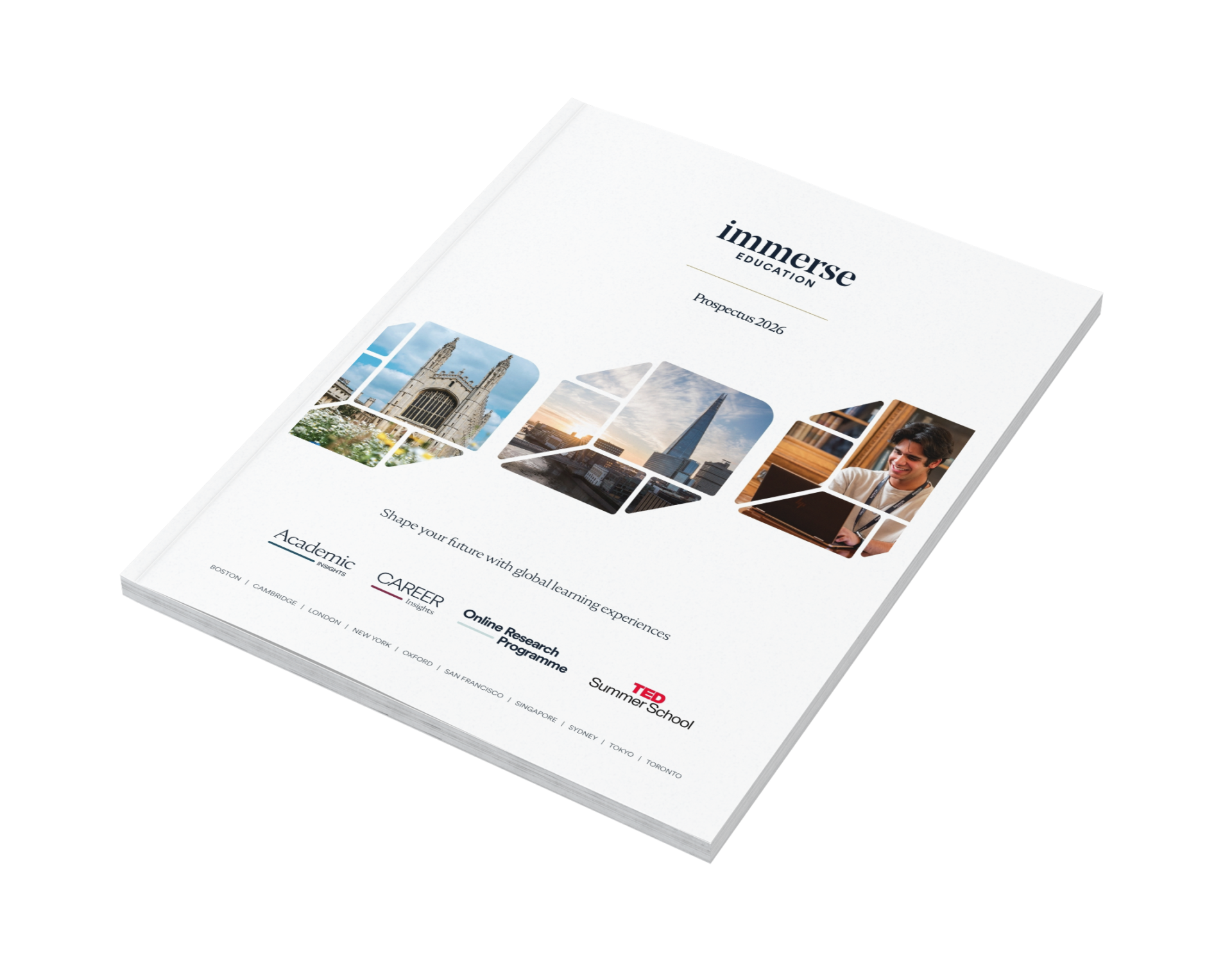Have you ever wondered how some students appear to have naturally good problem-solving skills and have a unique perspective during classroom discussions? But why exactly is that? Are they just smarter than everyone else?
Well, there is more to it than you might think. It is their honed critical thinking ability that gives them the edge. When you think critically, you scrutinise information, challenge assumptions and make rational decisions. All of which are tenets of a great student.
Thinking critically as a student opens your mind and allows you to analyse information differently.
So, how can you improve this critical skill?
That’s where this extensive guide comes in. We have created a customised path for you to follow in this article, enabling you to enhance your critical thinking process greatly. We will discuss each step in detail and offer actionable tips along the way.
So, let’s get started.
Step 1: Engage in active reading and questioning
To engage in active reading effectively, an important strategy is to interrogate the author by asking questions about the text. It is where you get the true insight into what the author wants to say.
Here are a few simple yet effective strategies you can use when asking questions as critical thinkers:
- Ask clarifying questions: If you are struggling to understand what the author is saying, you can ask questions like ‘What does the author mean?’ or ‘How does this connect with what the author said above?’
- Inquisitive approach: Use this question to dive deeper: ‘Why is this information significant?’
- Connecting ideas: If you are already familiar with the subject, put it in your pool of knowledge and ask yourself if it is consistent or inconsistent with what you already know.
This approach not only provides a better understanding of what you are reading but also makes the act of reading more active and entertaining.
Through your questioning, you are learning and involved in a crucial part of what is being learned. That’s when you are actively engaged in your reading.
Another skill required for active reading is identifying the main ideas in a text. It involves identifying the central claims or ideas and the details that substantiate them in a text.
The techniques that can help pinpoint the main ideas include:
- Watch out for repetition: Authors tend to repeat the central ideas or keywords; this repetition could bring you to the main themes.
- Paraphrase paragraphs: Take notes and try to write down the paragraph in your own words. This way, the paragraph’s meaning will emerge and reveal the main idea.
- Topic sentences: In particular, a paragraph’s concluding or opening sentence outlines the central theme. Take note of these sentences.
Challenge assumptions
Challenging assumptions is an effective technique of active reading, which can significantly enhance the quality of understanding and thought.
Here’s how to challenge assumptions effectively:
- Find implicit assumptions: Find the unstated premises or hidden beliefs in the given text. Assess the legitimacy of these assumptions by asking: What is assumed in this paragraph?
- Compare with alternative views: Consider the alternative views concerning the issue and their own way of interpreting the same material.
- Evaluate evidence: Assess the credibility of the text’s evidence. Is this proof convincing enough to support all the claims it has made?
In challenging the assumptions, you enrich your knowledge and also encourage systematic dialogue about diverse approaches and arguments. The approach urges a more profound and comprehensive engagement with the text, demanding advanced learning and critical analysis.
Step 2: Seek diverse perspectives
If you are serious about developing critical thinking, then it will become imperative that you consciously expose yourself to various perspectives.
Again, this does not just mean simply hearing the different points of view, either. You take time to understand what thoughts, beliefs, and experiences go into those opinions.
Engaging others who have viewpoints different from yours is challenging your creative thinking. You are escaping the echo chamber and getting exposed to other ideas that challenge your beliefs and biases.
Remember, good critical thinkers are always listening to people with whom they don’t necessarily agree.
Some significant benefits of indulging in diverse perspectives are:
Exposure to different thought processes
When you interact with people from a background that is quite different from yours, it shows you a window to an entirely different way of thinking.
This might be the key to sorting out your way of seeing things. You might see a problem from an entirely new angle than you ever had before.
Challenges your own biases
Everyone has their biases and assumptions they operate with. When you do not challenge this, you get stuck in a certain way of thinking.
Being able to think critically involves challenging these biases, and what better way of doing that than interacting with people with diverse opinions?
Improved problem-solving skills
When you have a new perspective, you start looking at the problem with fresh eyes. It might actually help you a lot in coming out with an out-of-the-box solution.
Looking for diverse insights is an intended act, and you have to strategise how to get them.
Here are just a few ideas on how you can go about doing this:
Look for other sources of information
One can easily fall into the trap of accessing information from only one source.
If you want to expand your horizon and perspective besides cultivating strong critical thinking abilities, you will have to be versatile in accessing content from different media sources. Seek out authors, speakers, and media from diverse backgrounds.
Join several groups
Getting involved with people who have thoughts different from yours is a perfect way to embrace the diversity of the mind. Look for various forums in which you can participate.
Practice open-mindedness
One of the most significant challenges beyond embracing diverse thought is the practice of open-mindedness.
When you are seeking to enhance your intellectual horizon, approach an argument with empathy and openness whenever possible. In other words, try to view it from the experience that might have produced that point of view.
Doing this will help you enhance your educational journey and improve your critical thinking.
Step 3: Develop analytical skills
As you become more familiar with complex topics, you solve problems and arrive at logical conclusions, so critical analysis skills are essential.
These skills allow you to analyse information, identify patterns and develop rational conclusions. Improving analytical skills requires a combination of practice, critical thinking, and innovative problem-solving approaches.

Tips for improving analytical skills
If you want to improve this critical skill, here are some actionable tips:
Engage in brain-training activities
Engage in activities that challenge analytical thinking, like puzzles, mind games (e.g., chess), or brain teasers. These activities improve cognitive flexibility and promote creative thinking so you can look at the problems from different angles.
Practice critical reading
Develop a habit of constantly analysing texts critically. It includes challenging the author’s intention, examining the evidence presented, and considering other viewpoints. It sharpens the critical thinking process and rational reasoning.
Learn from various disciplines
New areas of study can enhance your analytical ability. Logical reasoning is improved by mathematics, and history broadens cause-and-effect connections.
At the same time, literature inspires empathy and intricacy of thought. The combination of knowledge from different sources results in a lot more synergistic analytical thinking.
Keep in mind that even the simplest of problems may seem overwhelming and impossible at first sight. By dividing them into smaller parts, they become more manageable and comprehensible.
Here are a few steps you can take to do just that:
- Identify the core components: First, determine the major components of a given problem. What variables, principles, or broad questions do they focus on?
- Analyse each component separately: Study each element of the given problem individually. Such a concentrated approach provides an excellent opportunity for gaining better insight into each element and its contribution to the whole.
- Reconstruct the problem: After a detailed analysis of the respective parts, put the issue together using insights from each element. The global perception usually exposes many links and resolutions that were not visible at first sight.
The process of developing the analytical skills is a continuous process. It requires curiosity, excitement for new challenges, and the ability to face complex issues.
With these practical tips and strategies, you can significantly improve your analytical skills, underpinning the improved academic performance that leads to informed decision-making in your personal life as well as career progression.
Check out Immerse Educations’ Online Research Programme, which is tailored to help you develop a university-style research project with 1:1 tutorials.
Join the Immerse Education 2025 Essay Competition
Follow the instructions to write and submit your best essay for a chance to be awarded a 100% scholarship.
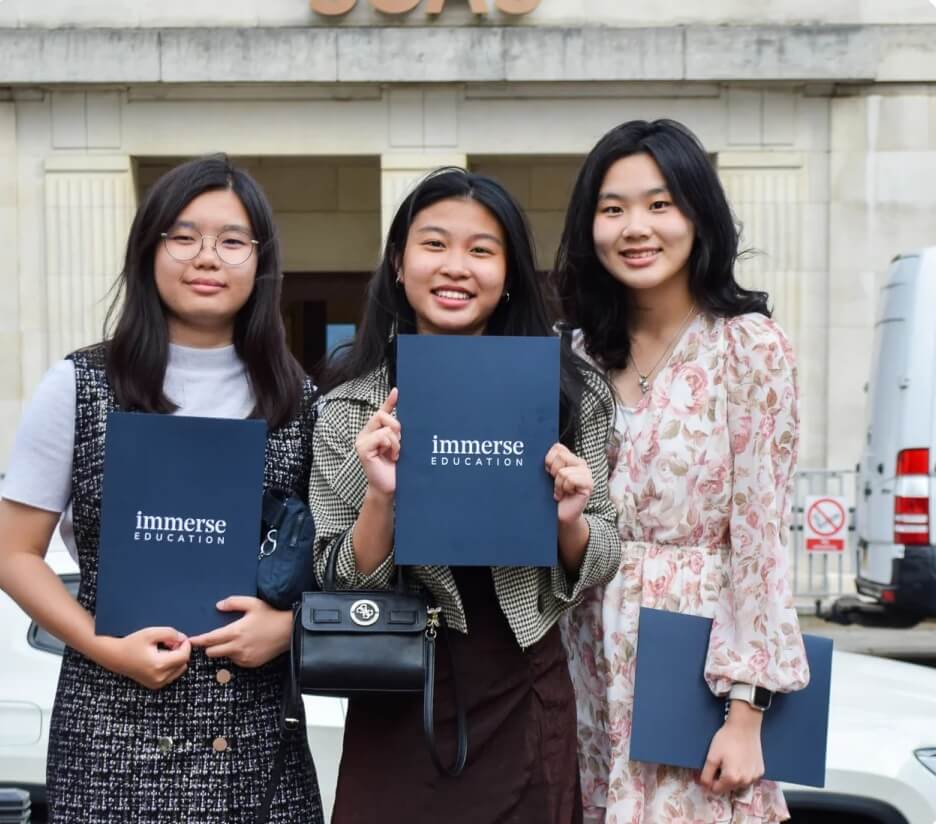
Step 4: Practice reflection and self-assessment
Reflective practice and self-assessment play an essential role in developing a growth mindset. It helps you to expand your intellectual horizons and develop critical thinking.
The reflection in the critical thinking process aims to understand and evaluate different perspectives. It encourages students to step back and contemplate what they think and how they arrived at that conclusion.
Self-reflective exercise results in a deeper understanding of the concepts and improved critical thinking.
Here are a few practical ways to put this technique into practice:
Utilise reflective journals
Journaling is a great way to reflect and develop self-awareness. Maintain a notebook or a diary to jot down your thoughts, observations, and any questions that you might have.
This habit leads to the crystallisation of thought and the detection of patterns or any loopholes in understanding.
Discuss with your mentors
A debriefing session with your teacher after an assignment can go a long way. Discuss how you approached the assignment, the strategies that you deployed, and whether you succeeded or failed. The exercise can turn the experiences into learning moments.
Self-assessment promotes a sense of ownership in your own learning process. Through self-evaluation, you can determine your strengths and areas where your work falls short.
Here are some tips to effectively perform self-assessment:
- Develop self-assessment checklists: Ensure you have a checklist for evaluating your reasoning, argumentation, and evidence. The structured process of self-evaluation allows you to reflect on your performance and develop critical thinking.
- Set personal learning goals: Create SMART goals based on your self-assessment. Setting goals channels your activities and encourages a constructive attitude toward increasing your analytical capabilities.
Reflection and self-assessment not only promote a practical critical thinking process but also encourage an environment of constant change, where you become responsible for your learning.
This self-reflective cycle ensures that you are a passive recipient of knowledge and an active participant in your intellectual growth.
Step 5: Leverage technology for research
Technology is central to research and gathering of information. It includes a wide range of online systems and tools that can simplify how you gather information, giving you diverse perspectives on any subject.
However, the essence lies in applying these technological tools judiciously and wisely.
How to utilise technology for effective research
It is easy for students to fall into the trap of over-reliance on technology, especially during the initial phase of information gathering.
Here is an excellent guide on how to do it in an effective way:
Search engines and academic databases
Try to use advanced search engines and academic databases, including Google Scholar, JSTOR, and PubMed.
These platforms allow you to gain access to peer-reviewed articles, research papers, or other forms of credible information.
Online libraries and digital archives
Online libraries such as Project Gutenberg and digital archives from the world’s top institutions are a haven for many resources.
They offer expansive collections of books, historical material, and literary works for free, thus making them priceless research materials.
Online tools for enhancing critical thinking skills
Apart from researching for information, the internet is a treasure trove of great tools that can help you develop critical thinking.
Some of the tools you can use include:
- Critical analysis tools: Tools such as Crit-IQ and Parapal Online allow for the development of essential skills of analysis by guiding the users in evaluating arguments, discerning cognitive biases, and appreciating alternative opinions.
- Mind mapping and brainstorming software: Visual tools such as MindMeister and Coggle help structure thoughts, ideas, and research results. They contribute to organising information, which is essential for critical thinking and problem-solving.
- Fact-checking websites: The use of well-known fact-checking websites such as Snopes, FactCheck.org, and also PolitiFact is excellent for verifying the information. Fact-checking promotes the questioning and verifying of information, which is central to critical thinking.
The use of technology in research not only increases the speed and the scope with which data is collected but also promotes a critical perspective toward analysing and integrating information.
With platforms like Immerse Education that teach students how to incorporate these digital tools ethically and also efficiently as a part of expanding research capabilities, critical thinking can be significantly promoted at a deeper level.
Step 6: Engage in collaborative learning
Collaborative learning is an innovative type of education that encourages individuals to work together toward a common objective.
The approach not only enhances the learning but also significantly increases the critical thinking capability and observation skills of the students by exposing them to different perspectives and approaches to solving problems.
Benefits of collaborative learning
This approach has many benefits. They are:
- Exposure to diverse perspectives: Collaborative learning involves students from various backgrounds with different knowledge bases, ways of thinking, etc. This diversity promotes an enriched learning environment that allows you to be exposed to a variety of points of view.
- Enhanced problem-solving skills: Solving complex problems together is one of the advantages that group work promotes.
- Development of social and communication skills: Team-based projects require strong communication and interpersonal skills. While students express their views and learn from others, they sharpen the capacity to succinctly portray complex facts, an essential element of critical thinking.
How to implement collaborative learning strategies
Here are some ways to implement this approach in your study:
- Group projects: Get involved in group projects that must be completed by working together. These projects promote every member’s specific skills and know-how, creating individual responsibility for the group result.
- Peer reviews: Participate in peer review sessions where the students critically evaluate each other’s work. This exercise is a source of valuable feedback and stimulates evaluation of your peers’ logic and arguments, besides developing critical analysis skills.
Collaborative learning revolutionises the educational environment by making it a more active and dynamic platform for developing critical thinking.
Through group projects, the students learn from the curriculum as well as from each other and get an opportunity to grasp a deeper understanding of what is happening in their subjects.
This collaborative approach to learning is an avenue that prepares you for the kind of working culture you will encounter in a modern workplace. It also supplies you with inferential skills crucial to your success as a scholar and a professional.
Step 7: Engage in discussions
Classroom discussions play an integral role in the education process as a dynamic medium for the students to voice their arguments, listen actively, and consider other people’s opinions.
The interactive nature leads to a deeper understanding and dramatically improves cognitive abilities.
Here are some benefits of classroom discussions:
Active engagement with material
Discussions require active connections with the learning materials. It is more than passive hearing or rote learning; you must analyse and learn how to apply what is being discussed.
Development of communication skills
Participating in group discussions enhances your ability to communicate complex ideas. This skill is a fundamental component of critical thinking, not only because it involves processing but also ensures that reasoning and conclusions are adequately articulated.
Exposure to diverse viewpoints
Classroom discussions unveil a wide variety of views that require you to rethink, reassess, and critique all the different alternatives. This type of exposure helps you establish empathy and develop the ability to evaluate different points concerning a topic or issue.
Here are a few tips to improve the effectiveness of your discussion sessions:
- Value openness and respect: Make sure your discussions are as open and respectful as possible. You must respect divergent opinions and strive to create a positive and inclusive environment for debate.
- Make adequate preparations: A critical thinker always comes to discussions with questions or comments about the subject. Use broad questions to elicit any deeper ideas and examinations of the topic.
- Practice active listening: Develop functional listening skills, paying undivided attention to what is being said instead of merely eavesdropping. Active listening makes it much easier for you to understand and develop more appropriate responses.
Takeaway: Sharpen your critical thinking skills with effective strategies
You can take practical steps to promote the necessary thinking skills to achieve academic greatness.
Participate actively in the discussions, accepting alternative opinions to gather more knowledge. You can also use reflective thinking to analyse your rationale.
Developing analytical abilities through the breakdown of complicated matters is also an essential skill to have. Use technology to your advantage during research and use collaborative learning as an opportunity for receiving multiple perspectives.
Finally, adopt a mindset of lifelong learning and feedback to improve your thinking processes.
When done regularly, these steps can significantly enhance your critical thinking skills, problem-solving abilities, and academic performance.
Participate in our Online Research Programmes to transform your learning journey. Engage with top tutors and prepare for future success through rigorous, stimulating courses.
